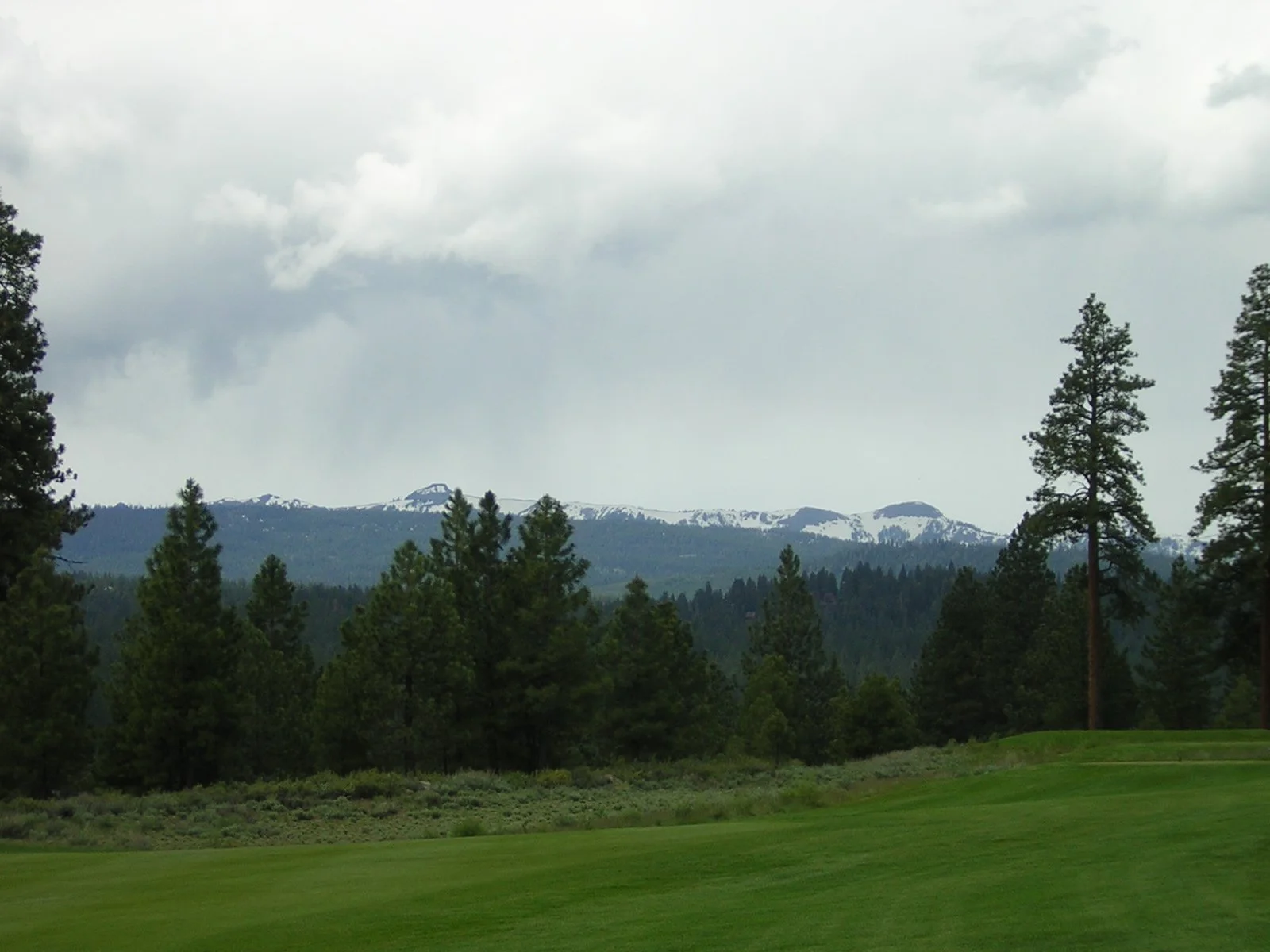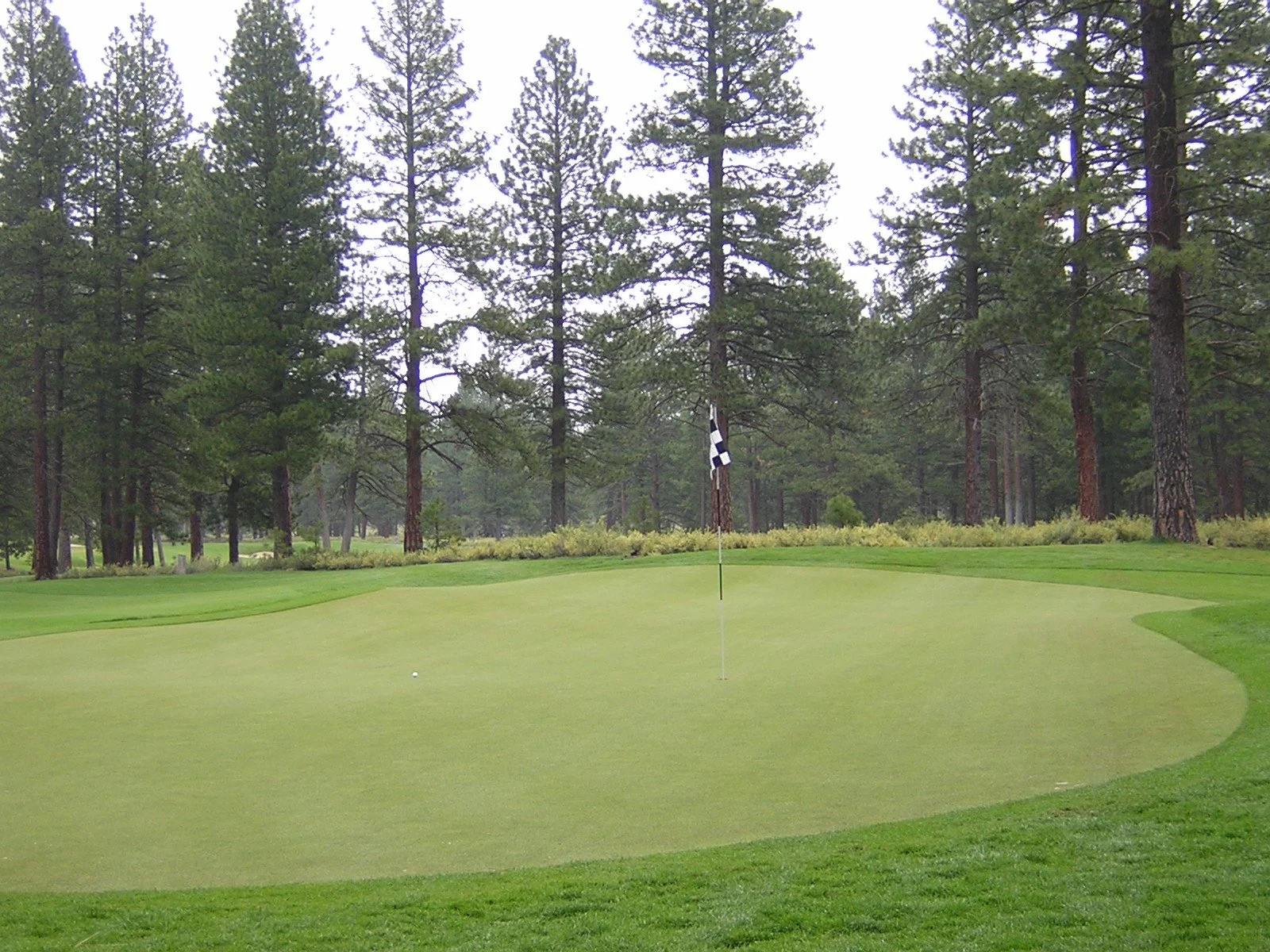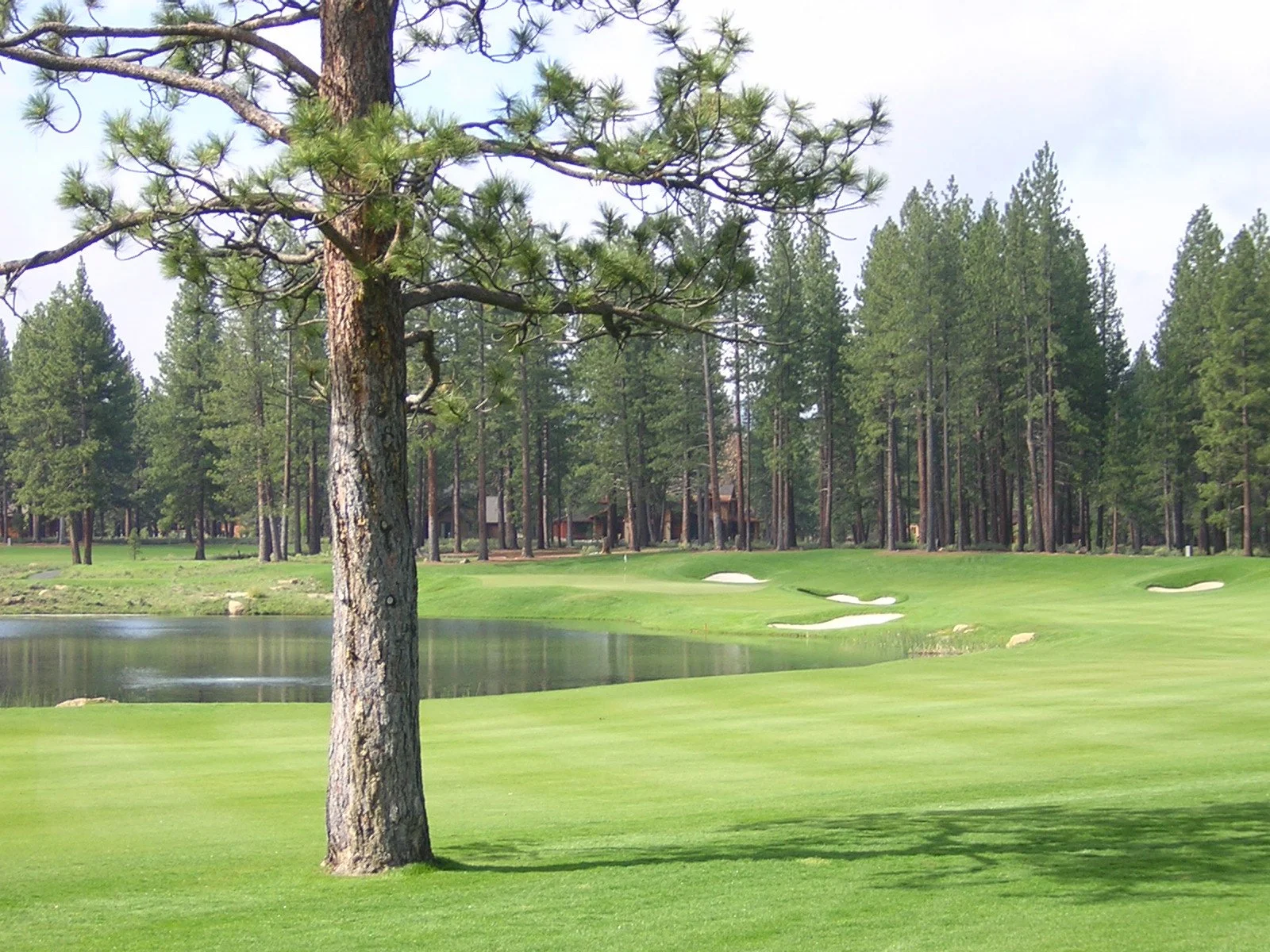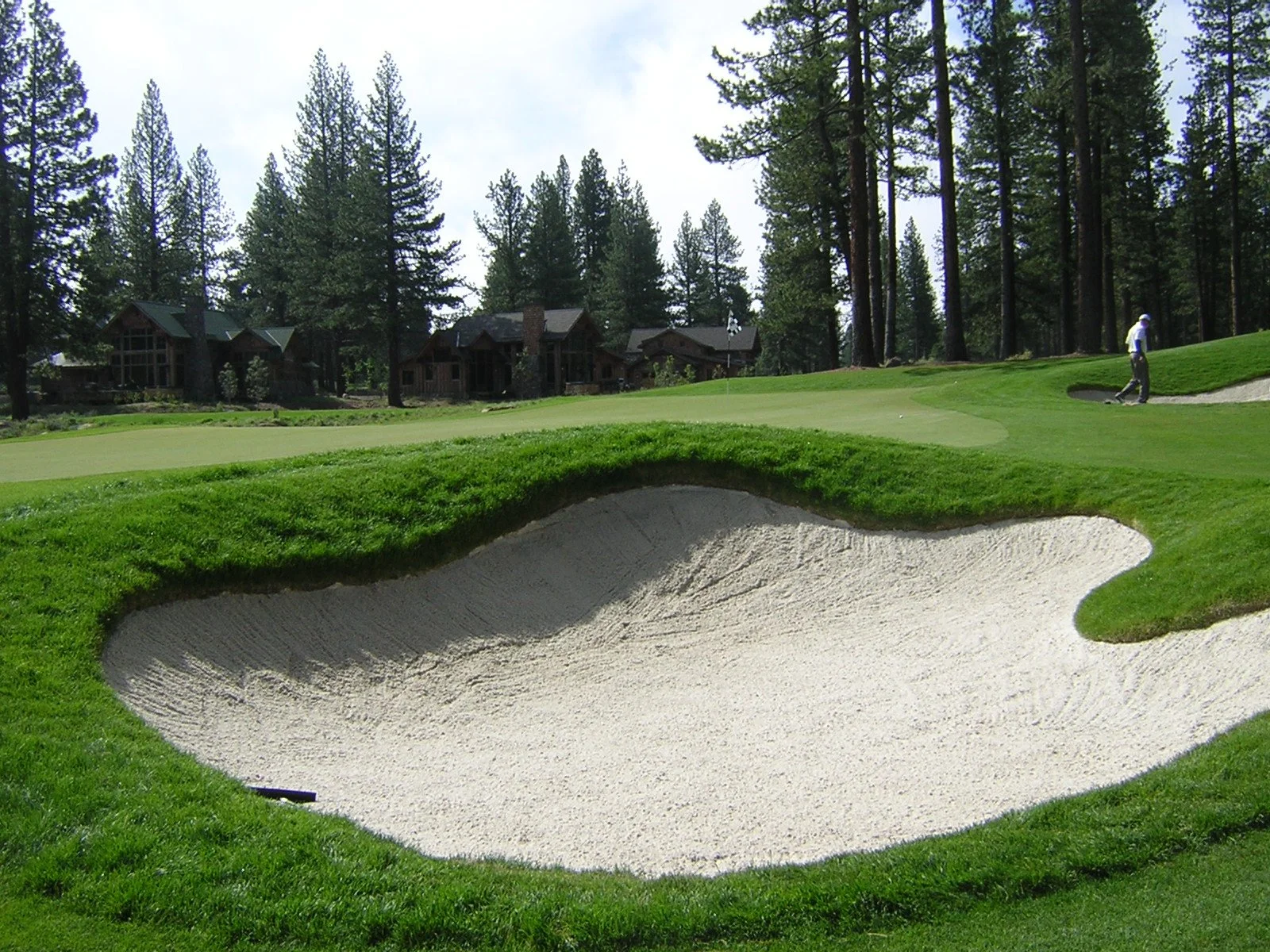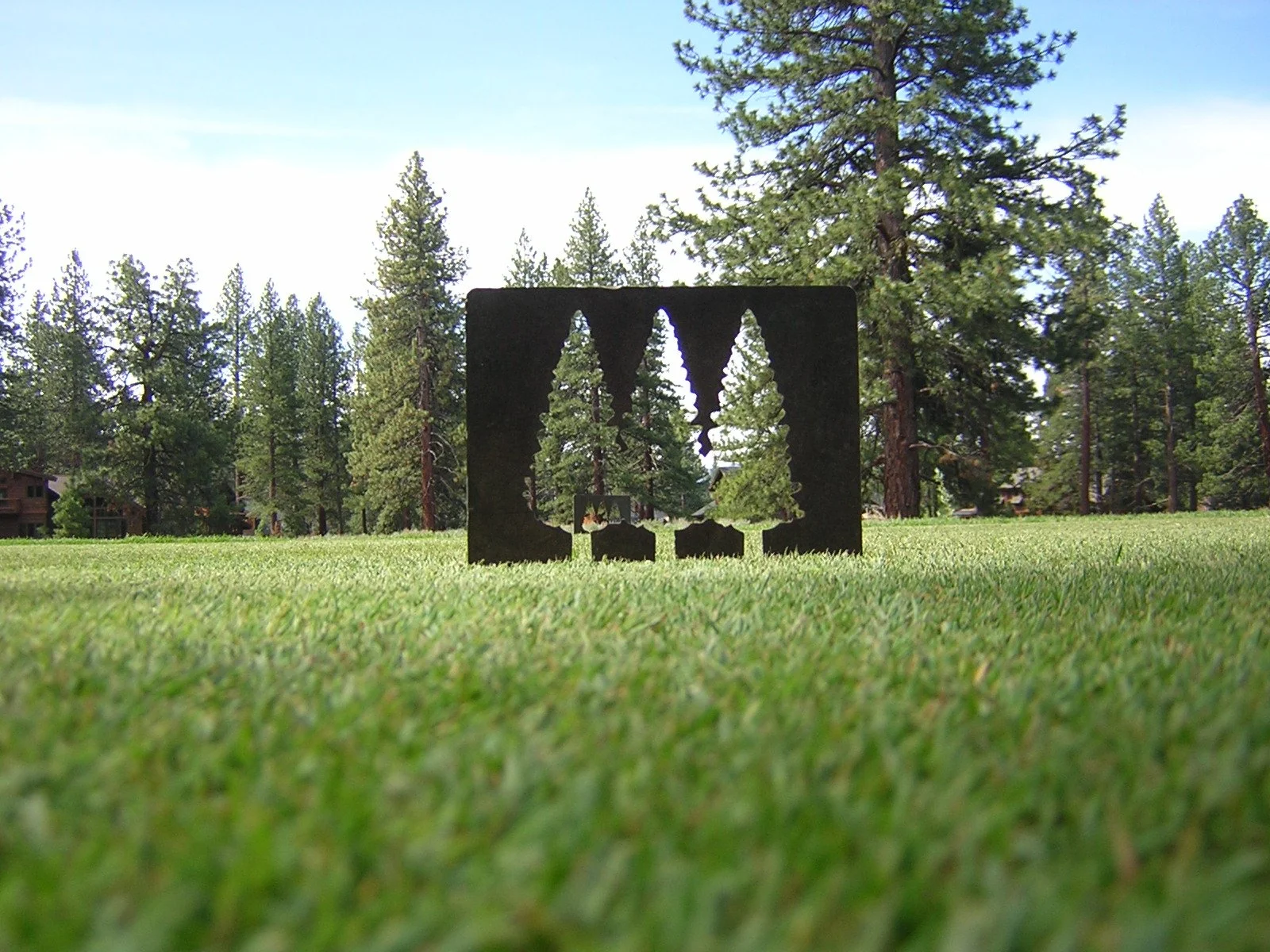Tahoe Mountain Club (OLD GREENWOOD)
Course Architect: Jack Nicklaus (2004)
Year Opened: September, 2004
Location: Truckee, California
Slope: 149. Rating: 75.8
Par: 72
Yardage: 7,518
Hole-by-Hole: 1 - Par 4 462 Yds 10 - Par 5 600 Yds
2 - Par 5 631 Yds 11 - Par 4 345 Yds
3 - Par 3 196 Yds 12 - Par 5 551 Yds
4 - Par 4 383 Yds 13 - Par 4 522 Yds
5 - Par 4 484 Yds 14 - Par 4 472 Yds
6 - Par 5 578 Yds 15 - Par 3 221 Yds
7 - Par 3 187 Yds 16 - Par 4 396 Yds
8 - Par 4 357 Yds 17 - Par 3 230 Yds
9 - Par 4 452 Yds 18 - Par 4 451 Yds
Par 36 3,730 Yds Par 36 3,788 Yds
Awards Won: Ranked #35 Best in State (CA) by Golf Digest (2009-10),
#23 Best Courses Near You (CA) by Golf Magazine (2008-09),
Top-100 America's Golf Communities - Travel + Leisure (2007),
#14 Best Golf Experiences in the West - Fairways & Greens (2006),
Top-100 America's Premier Properties - Links Magazine (2006-07),
Top 30 Best Courses in California - Golf Digest (2006),
Top-10 Best New Public Access Course in US - Golf Magazine (2005),
#4 America's finest Upscale Public Courses - Golf Digest (2005),
Audubon International Gold certification.
Key Events Held: Barracuda Championship (2020-present).
Website: www.oldgreenwoodgolf.com, www.oldgreenwoodgolfacademy.com
HISTORY: The story of Old Greenwood is quite short, since the course has only been open less than 10 years, however the land the Truckee, California-based venue sits upon has quite a storied past.
The course is named after Caleb Greenwood, a western U.S. fur trapper and pioneer, who was originally born in Virginia in 1763. Greenwood guided several parties across the Sierra Nevada mountains, including one in which he completed one of the first overland wagon journeys to California via Walker Pass. Greenwood, along with two of his sons, also directed another party
through a new avenue bypassing the Truckee River Canyon, which became a main route of the California Trail. The Sublette-Greenwood Cutoff became the most frequently traveled route for people flocking west at the time of the California Gold Rush.
In the mid 1840s, "Old Greenwood," as he was called, now in his 80s and living north of San Francisco, continued to guide parties back across the High Sierra to Fort Hall. By 1848, Greenwood's entire family lived in Coloma, near Truckee Lake. A story known as the "Gold Lake" fable arose from Greenwood claiming to have seen an enormous amount of gold near the lake. The "Greenwood Rush" would never materialize, and Greenwood away would pass soon thereafter.
Moving ahead some 100-plus years, East-West Partners, Inc., a real estate development company based in Colorado, began to expand to Salt Lake City, Utah and Lake Tahoe, California.
Situated in the historic town of Truckee, EWP began its goal of creating a premier, resort community, complete with a signature golf course. Who better to enlist for the latter project than the world's greatest golfer of all-time, Jack Nicklaus?
The Golden Bear has designed hundreds of courses around the world, including a selection that ranks among the top-100 in America. Venues like Muirfield Village, Castle Pines, Shoal Creek and Valhalla are just some of the outstanding courses he's crafted.
Although Old Greenwood has not reached that pinnacle, as of yet, the layout has received plenty of accolades in just a short period of time. Golf Digest and Golf Magazine have already placed Old Greenwood in their top tiers of courses in the state of California. High praise, since the Golden State
features some of the greatest courses on earth, like Pebble Beach, Cypress Point and Olympic Club.
Almost 6,000 feet above sea-level, Old Greenwood resides on 100 acres of the 871-acred development. Nicklaus and his crew began construction in July of 2002 and in just two years completed his signature golf course. Nicklaus incorporated the local topography, majestic Jeffery Pines and indigenous flowers and sage-brush into one of the prettiest layouts in the region.
Very little dirt was moved (by today's standards), as only 300,000 cubic yards of earth were excavated. What Nicklaus did however, was implement several water hazards. In fact, when the project began, the property was devoid of surface water. When finished, water was incorporated on six holes through a series of lakes and streams. Conservation was of the utmost importance, as the
low-impact land project utilized snow and storm run-off, as well as innovative water re-use.
Each corridor was painstakingly carved through the property, one hole at a time, as Nicklaus and company inspected and injected recommendations for each and every par 3, 4 and 5. This tactical approach was quite unique, as most layouts start out by bulldozing the land and then plotting a course of action.
When completed, Nicklaus and East-West Partners had an award-winning layout worthy of championship status.
So much so, that the PGA Tour made its inaugural visit in 2020 for the Barracuda Championship. Employing the Stableford scoring format, the tournament was the first PGA Tour event to use this format since The International in 2006.
Richy Werenski became a first-time winner in 2020, as he defeated Troy Merritt by one point. The victory came in his 100th start on Tour. Fabian Gomez and Matthias Schwab tied for third, two points back.
2021 saw Erik van Rooyen post a five-point win over Andrew Putnam for his first career PGA Tour title. van Rooyen set a tournament record, as he scored 50 points en route to become the third player from South Africa to win on Tour that season.
Chez Reavie won for the third time on the PGA Tour in 2022, as he posted a one-point win over Alex Noren. The victory was his first since he captured the 2019 Travelers Championship.
Another first-time winner posted victory at the Barracuda Championship in 2023, as Akshay Bhatia parred the first playoff hole to defeat Patrick Rodgers. The pair finished regulation at 40 points, three clear of Julien Guerrier and Jens Dantorp.
In 2024, the Tour switched the nines for the event, as the players began on the 540-yard, par four 10th hole. When it was all said and done, Nick Dunlap posted a two-point win over Vince Whaley for his second career win in only his 21st start. Dunlap registered 19 points during the final round to become the first player since Tom Kim in 2022 to win twice on the PGA Tour before turning 21. Dunlap also became the first player in Tour history to win as an amateur and as a professional in the same season, as he won the American Express before turning pro.
REVIEW: The decision on the first hole is an easy one. Pick the right set of tees to have an enjoyable round. Unless you're a PGA professional, stay away from the "four tree" markers. At 7,518 yards that's way too much, even with the elevation changes. Three trees is a great choice or better yet, mix and match with the next set, as this will play around 6,700.
The opening hole at Old Greenwood is a wonderful, dogleg right par four, reaching 462 yards. Trees and a deep bunker down the right certainly come into play, so adjust accordingly, as the fairway slopes towards the trouble. The first plays slightly downhill, so your approach should be with a medium iron. The putting surface is 36 paces deep, with a gaping bunker on the right, which must be avoided. Don't be goaded into attacking a back-right pin, play to the center and make par.
At 631 yards, the second is the longest hole on the course. Bending to the right, you'll need to bust your tee shot down the right side in order to take advantage of the sloping fairway. Be warned, as trees adorn both sides of the landing area. Your layup should favor the right, as this will set up the best point of attack towards the angled green. The slightly raised putting surface is slick and protected numerous traps. A front pin can be tricky, as the green falls off sharply. This par five is anything but easy.
The first par three is a gem, just under 200 yards in length. Angled to the right, the putting surface is guarded by seven, diabolical traps. A medium to long iron should suffice, but you'll have to carry the entire yardage to be safe of trouble. The sloping green features a rise in the center, which can be
advantageous to the player, especially with a front-left pin.
One of a quartet of par fours under 400 yards, the fourth can be a friend or a foe. The key is choosing the right club off the tee, as tall pines line both sides of the fairway. A fairway metal or long iron could be the play in an effort to bypass the trouble. Your second shot will play uphill towards the green, so make sure to add a club or two to your approach. The putting surface is long and angled to the right and slopes hard from back to front, so stay below the hole. A trio of deep traps, strewn across the front of the green definitely come into play.
The second longest par four on the course, the fifth can be stretched to 484 yards. You'll need every bit of your driver off the tee to have any shot of getting home in regulation. Favor the right side for the best angle, but make sure you miss the two traps or you'll be laying up. Your approach, most likely with a long iron or hybrid, must negotiate the extra long and narrow putting surface that slopes towards the front. Sand on either side of the green will make for an almost impossible up and down. It took me three shots to escape the fluffy stuff!
Any of the first five holes could be considered in the "signature hole" range, but the sixth is just that. A beautiful, risk-reward par five of 578 yards in length, No. 6 has all the elements. Off the tee, you must avoid the enormous trap down the left and trees down the right. A good drive will leave you with a couple of options. The easy idea is to layup down the right side, as the hole wraps around a lake to the left or, take out the three-metal and play a sweeping draw over the water towards the longest green on the course. Sand dots the landscape as you get closer to the putting surface, just to keep you honest. Sloping from back to front and 46 yards in depth, the green is just another obstacle to negotiate.
If the seventh doesn't catch your eye, then nothing will. This wonderful par three is played entirely over water to a long and undulating green. Trees in the distance give this beauty real depth, while the crossing breeze, gives the player heartache. A back-left pin can be enticing, not to mention a round
crusher.
Talk about your risk-reward holes, the eighth is as good as it gets in that department. A dogleg right par four of just 357 yards, this one can be had, but you'll need your best to beat it. Nicklaus has placed sand throughout the fairway and in strategic spots to thwart your attempt. A 258-yard shot will be needed to carry the corner and then 295 yards to clear bunker in the center of the fairway. Your best play is down the right side, using a high cut. At worst, you're left with a simple pitch to a very accessible green. Hey, if I can make birdie, anyone can.
A sweeping dogleg to the left awaits the player on the ninth tee. Play a draw with your first shot, bypassing the trap on the left and the Siamese trees down the right. Your approach will be slightly uphill to a well-guarded and long putting surface. The multi-tiered green slopes back to front and is quite slick. A back-right pin brings three deep bunkers into play, so play towards the center of the green and let your putter do the work.
Par-five No. 2 of the 600-yard variety awaits the player on the 10th tee. This gem wraps around a lazy creek to the left from tee to green. I'd find it hard to believe that this one could be reached in two, but anything is possible. Avoid the fairway bunkers down the right and you'll have an easy layup on the right. The water juts out on the left as you get closer to the green. The putting surface is long and slick with a pond running close to the edge. With a short club in hand, this hole can be had.
From long to short, as the 11th is only 345 yards in length. The key here is accuracy, as a small lake guards the right landing area and a 30-yard bunker flanks the left. Fairway metal off the tee makes sense, leaving a wedge to a long, narrow green. Any shot mis-hit right will end up wet, while left is sand and long is a shaved chipping area that falls sharply off the green. It's easy, but not that easy.
Carved through the majestic pines, the 12th is the final par five on the course. Sand in strategic spots along the fairway will decide your fate. First off the tee, a 50-yard trap down the right side looms large and must be avoided, however the landing area is quite tight at this juncture, so be careful. Next, a 32-yard bunker down by the layup zone, again on the right, tightens the fairway to less than 20 yards. If you can clear this hazard, then you're home free with your third, which will require nothing more than a pitch to the kidney-shaped green. Sand left and rear will see plenty of action, not to mention the shaved chipping area to the right.
It's not often that a 522-yard hole is a par four, in fact, that's usually saved for U.S. Open courses. That is the case, however at Old Greenwood, as the 13th is one tough hombre. This straightaway monster plays every bit its length and with three deep traps looming on the left, you might have to play it as a par five. Your approach will most likely come from a fairway metal or hybrid to a very deceiving green. A rock formation fronts the putting surface, however it stands at least 30 yards short of the green. Running from front to back, the putting surface is wide and fairly long at 36 paces. The best play is to play short of the green, as most shots will release towards the hole. How this is the No. 8 handicap hole is beyond me.
Another outstanding par four, the 14th reaches 472 yards from the four tees markers. A 270-yard blast is needed to clear the bunkers down the right side off the tee, thus setting up your 200-yard approach to one of the prettiest settings on the course. A small lake down the right side guards the very long green that's angled to the right. The two-tiered putting surface runs towards the water on the left and to the back on the right. Three well-positioned traps protect the rear of the green. This concludes a five-hole stretch that featured four of the hardest holes on the course.
You're certainly not out of the woods as you reach the 15th. This par three measures 221 yards and plays every bit of it, despite the rarified air. The last bit of water on the course covers the entire left side of this beauty. Six bunkers dot the landscape of this one-shotter, as they surround the 37-paced green. Just a reminder, stay away from a back-left pin!
Certainly not a letdown, but the 16th hole is the easiest on the course (not on my scorecard however). The key is the right club off the tee, as the fairway is just a few paces wide at the 260-yard mark. Three-metal or long iron is probably the smart play at the onset, as this will leave a medium to
short iron to a putting surface that sits well below the fairway. Angled to the right, the long and narrow green features three levels, with a back-right pin being the most difficult.
At 230 yards, the 17th is the longest par three on the course. With the mountains in the background, it's hard to concentrate on the prize. Fairway metal, hybrid or long iron, all good calls off the tee. Another monstrous putting surface, this time guarded in the front by a pot bunker and a wide-mouth trap. The rear sand is as wide as the green and the pot bunker on the right, well, that's a no-no. The short-grass feeds from left to right, so when the greens are running, adjust accordingly.
Postcard material and magazine cover worthy, the closing hole is a picture of beauty, that puts the finishing touches on an outstanding course. Playing uphill towards the clubhouse and reaching 451 yards from the tips, the 18th is aesthetically thrilling. Although the fairway is quite wide, you'll need to bust a drive to clear the enormous trap on the right. Grab an extra stick or two to reach the green, as it sits well-above the tee. The putting surface is fairly small by Old Greenwood standards and every bit as difficult to hit, with three bunkers fronting and one in the rear. Sloping back to front and left to right, this green can be hazardous to your score.
FINAL WORD: When Jack Nicklaus is called in to do a "signature course," that means he'll spend plenty of time at the site. The Golden Bear certainly did, and his handiwork does not disappoint. It is a good sign that when asked about which hole represented the course as its signature hole, he responded, "None of them. We don't have a signature hole. They're all signature holes."
There's no doubt about it, Old Greenwood is as rich a course as the history of the land would suggest. Sculptured fairways, rolling terrain, magnificent topography, slick and undulating greens and an atmosphere conducive to a life-altering experience. With over 240 courses to his credit, Old Greenwood is one of just 10 courses worldwide which achieved the Nicklaus Signature Gold status.
Let's talk first about the Golf Academy at Old Greenwood. If it's a fix or a complete overhaul, director of instruction Keith Lyford will cure what ails you. A former PGA Tour player, Lyford has been named to GOLF Magazine's Top 100 Teachers list for the past ten years. Renee Trudeau teams with Lyford to utilize a 15-acre training complex, complete with a 1,500-square foot learning center equipped with an indoor/outdoor hitting bay. But that's not all. The Academy features several target greens with putting, chipping and sand play areas, not to mention a five-acre short game facility. The clincher is the four-camera system which enables Lyford and staff to evaluate and analyze your swing and putting stroke on split-screen TVs. If they can't fix the swing, then tennis might be your next conquest.
Now to the venue itself.
How good is Old Greenwood? In its first five years, the course has been rated in the top-50 in California, not to mention one of the top-10 best new public courses in the United States.
From the opening tee shot to your final putt, you'll be awed by the sheer beauty of the layout. Challenge-wise, you'll be more than satisfied by the difficulty of the course. Every hole presents a special test of your ability. Two par five's over 600 yards, a pair of par three's over 220 yards, six par
four's over 400 yards, including the 522-yard 13th and a slope rating of 75.8, that's what awaits the player on the opening tee.
The conditioning of the golf course is superb. The elevation changes throughout the course, in a word, magnificent. In fact, Audubon International recognized Old Greenwood as an Audubon Signature Gold Level Community, the highest certification, making it one of just 10 golf courses in the world with such lofty status.
No question, Old Greenwood is a high-end public facility with a high price tag, but it's worth the ticket of admission.
"If golfers are looking for incredible golf at great rates, Old Greenwood and Coyote Moon should be on their 'to play' list," said Bob Hickam, director of golf at Tahoe Mountain Club. "With the state of the economy on most people's minds, we're doing our best to offer rates that will keep all levels of
golfers coming back." A simple call to tournament director and Class A PGA Professional Mike Milligan (530-550-7037) and you'll be surprised at the special packages and options they can create for you.
The game plan at Old Greenwood is simple. Spend a couple of nights in the wonderfully-detailed cabins, complete with a full kitchen, spas, plasma screen TVs and all the amenities awarded to a full-class destination. Even a pool table is at your disposal. Play a couple of rounds of golf at Old Greenwood or its sister course, Coyote Moon, and have the time of your life. In your spare time, enjoy the state-of-the-art Members Pavilion, which features a fitness center, tennis courts, pools, hot tubs, game room, a children's playground and a movie lounge complete with a 66-inch TV stocked with a library of movies.
Old Greenwood is more than just a place for the guys. This is a family retreat at its best. "It's a very family-oriented community," said Blake Riva, managing partner with East West Partners Tahoe Operations. "It really affords people the opportunity to decide how much time they want to spend here. Some want to come more for skiing and others for the golf."
The bottom line...Old Greenwood and the Truckee, California region is a must for all golfers and families, not just the serious player. If you miss the opportunity to play one of the best courses out west, your golf resume will never be complete. I can say mine is as full as it ever has been.

